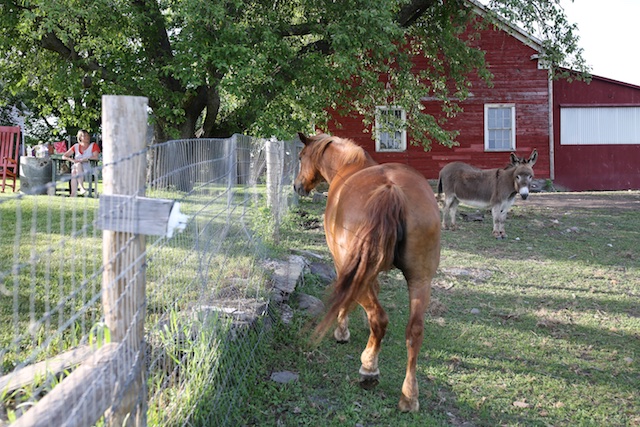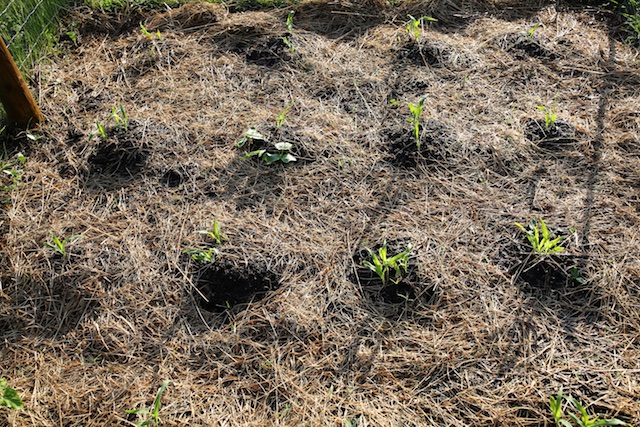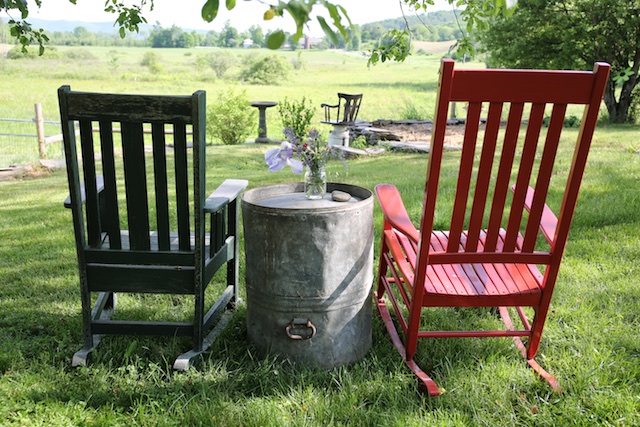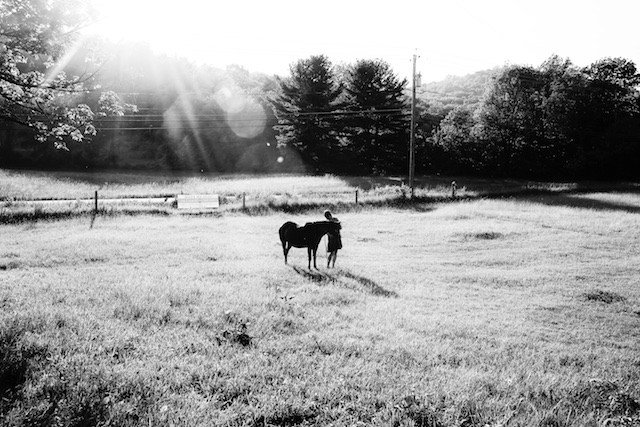
On the surface, the tragedy involving Craig Mosher and Jon Bellis has nothing to do with animal rights. It stemmed from a car colliding with a bull on a Vermont road last July. The bull had escaped – for at least the fourth time, according to police – and was hit by a car. The bull and Bellis, the driver of the car, were both killed.
Mosher, the owner of the bull, has now been indicted on criminal charges of involuntary manslaughter. While the animal rights community is not yet involved or tied to this awful happening, there is no doubt that the spirits and ghost of the movement hovers over the case and shapes our moral confusion and anguish over it.
The case, already important, became a study in animal ethics and morality yesterday when the Vermont State Police reported in that the bull had escaped many times and that Mosher was warned just before the accident that the bull was out and near the road and allegedly went to sleep. This was reported in the Rutland Herald newspaper.
Mosher has not yet responded to these charges, he will be in court Monday afternoon.
Farmers and people who work with horses and many animal owners and lovers are so fearful and angry over the depredations of the animal rights movement – there are now so many victims of irrational and unjust persecutions – that this case just seemed another nail in the coffin for farmers and people who live with animals.
So there was a deep and angry response to the news that the owner of a pet bull could go to jail because the bull escaped and was hit by a car. Mosher has not yet defended himself, but it the case, which seemed so clear cut, is not. It is more complicated than that. It is now a morality play, and a criminal case. It will have to be resolved and defined by the courts, not by Facebook or anyone’s pre-conceived notions.
The courts is where an issue like this belongs. The stakes are very high for the animal world. If animals accidents become a crime, the lives of animals and the people who love and own them will change radically and for good. I am reminded once more that there are usually two sides to every story.
If this is an isolated case shaped by extreme behavior or neglect, then it is just one case, sad and painful, without major implications.
One of the questions every animal owner is asking now is whether Mosher deserves to go to jail for his behavior leading up to the accident that killed Bellis, a 62-year-old part-time resident of Killington, Vt., Mosher’s home town.
Normally, accidents involving animals are treated in civil, not criminal courts. The prosecutor, whose name is Rose Kennedy, has a high bar to meet to justify so serious a charge. Many people feel that negligence, if it occurred, is justified by the death of a human being, even though that standard has rarely, if ever been applied to an animal escape. You don’t have to think too hard to wonder what the implications might be not only to hard-pressed farmers with miles of fences to tend, but dog and cat owners whose animals might – and often do – get out of the house and run into the road and are killed by cars.
How, exactly, is negligence defined when it comes to animals and why would this kind of case make it more and more difficult for anyone with animal to live and work with them or ever let them run or graze freely?
Manslaughter is a legal term for homicide, the accused considered less culpable than people who deliberately murder. Involuntary manslaughter is the unlawful killing of a human being without malice aforethought, either expressed or implied. It is distinguished from voluntary manslaughter by the absence of intention to cause serious harm. Criminally negligent manslaughter – the charge here – occurs where death results from extreme negligence, or in some jurisdictions, serious recklessness.
Criminally negligent manslaughter can occur where there is a failure to act when there is a duty to do so, or a failure to perform a duty that is required or expected, and when that failure leads to death. If the accusations against Mosher are true, the charge becomes more comprehensibe.
Although involuntary manslaughter has almost never been used in accidents involving animals – always considered an unavoidable and occasional act of nature, the prosecutor in the Mosher case and a grand jury that heard the case believes Mosher was criminally negligent, and that his negligence led to a person’s death. A milk truck driver says he went to Mosher’s home shortly before the fatal accident and told him his bull was out near the road, and Mosher failed to come outside and look for him.
So he called the police. A state trooper says police were repeatedly called to Mosher’s home because of escaped animals, and his fence was breached by an apple tree growing so close to it that it pulled it up off the ground. It takes a long time for a tree to do that.
Whether or not Mosher was guilty or is found guilty, the concern is that if these charges stand, anytime an animal escapes from a farm or a home, and causes an accident and death, there is the possibility the police will charge the animal’s owner with a felony crime punishable in jail. That door has now been opened. A human life is sacred, and to me, more important than a bull, but it just and proper to weight the human-animal bond, throughout history a linchpin of human existence.
It is a terrifying and destructive thing to be investigated by the police and prosecutors for a felony crime. Expensive and often life-shattering. This should never be a routine or expected part of living with an animal.
Everything has consequences, especially expansions of government power, and they are often unintended and ill-considered.
Anyone who has ever dealt with the animal rights movement understands that this new kind of charge will bring many activists great satisfaction, a new tool, and a new avenue of intrusion and accusation, since they do not believe animals should be owned by farmers or people in the first place. Many farmers are keeping their animals confined to barns, some say they will euthanize cows that often escape.
The animal rights movement generally believes that work for animals is abuse and torture. They have no credibility or trust among most farmers and many people who love animals and live and work with them.
Farmers need more support, not more legal pressure and threats. Animals need help in remaining with people and in our world, not being ghettoized on rescue farms and preserves. And people need more support in owning and adopting animals and caring for them.
Whatever the outcome, this kind of case will not make it easier for anyone to live with an animal who could ever get through a fence. Insurance companies and neighbors and ambitious prosecutors read the news too.
That is the elephant in the room that hovers over the Mosher case.
Personally, I find the new evidence offered by the Vermont State Police to be damning.
If my donkeys or pony escaped five or six times, I would either build new fences and repair the old ones or find new homes for the animals. And when someone called a few years to tell me my sheep were running up the road (a new fence had broken down) I was out the door and on the way in seconds.
I consider it a seminal moral responsibility – for the animals, for people – to keep my animals safely and securely within the boundaries of my farm. Having said that, I also understand that accidents and mishaps are inevitable. We have dealt here with lightning strikes, cars crashing through fences, trees falling on them, underground water rotting them. It is a rare week when a cow is not wandering on a road somewhere.
We always rush to help.
It would damage our community severely if this was ever to be considered a crime
Life happens to all of us, and it would be another kind of tragedy if everyone with animal had to endure investigation and possible indictment, trial and jail when life happened to them. Farms are difficult and messy places, farmers are busy, overwhelmed with work and stretched for time and money.
So this is not a simple case to consider or resolve, at least not in my mind. I want to hear what Mosher, a much admired and respected man in his town, has to say. Many good lawyers believe this charge is an overreach, even under the circumstances. There are many lesser and more appropriate ways to punish Mosher if, in fact, he was negligent in the extreme and failed to do his reasonable duty.
I’m planning to go to Rutland on Monday and take a look for myself, the best way I know of to make a sound and moral judgment. Facebook doesn’t work well for me in that regard.




